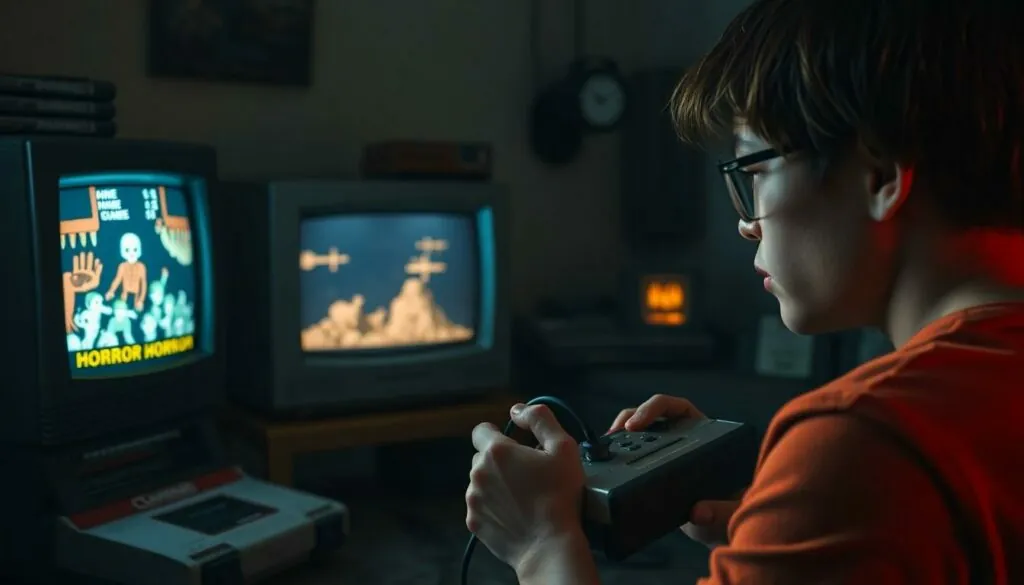In a world where jump scares and high-definition graphics reign supreme, old horror games stand as nostalgic relics that still send shivers down spines. These pixelated nightmares may lack the polish of modern titles, but they pack a punch with their clever storytelling and atmospheric dread. Who needs fancy CGI when a simple creepy soundtrack can make players question their sanity?
From the eerie corridors of Resident Evil to the chilling landscapes of Silent Hill, these classics remind gamers that sometimes, less is more. They invite players to embrace the fear, laugh at the absurdity, and appreciate the artistry behind the pixels. So grab your controller and prepare for a spine-tingling trip down memory lane, where the real terror lies not just in the monsters but in the memories they evoke.
Table of Contents
ToggleThe Evolution Of Old Horror Games
Old horror games laid the foundation for many contemporary titles. They introduced elements that still resonate with players today.
Pioneering Titles That Shaped The Genre
Resident Evil debuted in 1996, establishing a survival horror template. It combined limited resources with environmental puzzles, creating tension. Silent Hill followed in 1999, immersing players in psychological horror through unsettling narratives and haunting atmospheres. Both titles influenced countless sequels and spinoffs. Another crucial game, Alone in the Dark, launched in 1992, showcasing 3D graphics that enhanced immersion. These pioneering titles shaped storytelling methods and gameplay mechanics in the horror genre.
Key Features Of Early Horror Games
Limited graphics didn’t deter the effectiveness of early horror games. They relied on atmospheric sound design, which amplified tension and suspense. Players navigated fixed camera angles that often concealed threats. Inventory management became vital, forcing players to choose their resources wisely. Puzzles intertwined with the narrative deepened the sense of dread. Fear came from the unknown, as players often explored dark, unfamiliar environments. Each of these key features contributed to the lasting impact of early horror games, solidifying their status in gaming history.
Notable Old Horror Games
Classic horror games remain influential in the gaming landscape, crafting unforgettable experiences that resonate with players.
Resident Evil Series
Resident Evil revolutionized the survival horror genre when it debuted in 1996. Players navigate a mansion filled with zombies and various creatures while solving puzzles. The game’s fixed camera angles allowed for a heightened sense of tension and fear. Anxiety increased as players managed inventory and resources, enhancing the survival aspect. Each installment introduced unique elements, from the iconic T-Virus to memorable characters like Jill Valentine and Chris Redfield. The series emphasized atmospheric sound design, which intensified dread as players crept through dark hallways. Resident Evil set a benchmark for later horror games, demonstrating that managing fear can amplify immersion.
Silent Hill Series
Silent Hill debuted in 1999, immersing players in a fog-shrouded town filled with psychological horror. Players encounter disturbing imagery and complex narratives that challenge their perceptions of reality. Key features included an unsettling soundtrack that merged sound design with environmental storytelling. Characters like James Sunderland and Heather Mason faced their personal traumas, adding depth to the horror experience. The game utilized shifting camera angles and lighting to create a claustrophobic atmosphere. Fog and darkness obscured threats, intensifying feelings of isolation. Silent Hill’s focus on psychological horror set it apart, influencing many subsequent titles while leaving a lasting legacy in the genre.
Gameplay Mechanics In Old Horror Games
Old horror games use unique gameplay mechanics that create engaging and terrifying experiences for players. These mechanics, from sound design to puzzle solving, establish a compelling atmosphere.
Atmosphere And Sound Design
Atmosphere in classic horror games relies heavily on sound design. Creeping footsteps, distant whispers, and unsettling soundtracks amplify fear. Game developers used limited technology to create immersive audio that lingers in players’ memories. For example, the ambient noise in Silent Hill enhances the unease felt while exploring fog-filled streets. Designers often implemented environmental sounds to simulate a living world, deepening immersion. Players remember moments of silence followed by sudden auditory shocks that create tension. The importance of sound in these games cannot be understated; it cultivates an overall sense of dread.
Puzzle Solving Elements
Puzzle solving stands out as a key feature of old horror games. Games like Resident Evil incorporate intricate puzzles that challenge players’ logic and critical thinking. Items scattered throughout a game serve as clues that propel the narrative. Completing these puzzles often reveals crucial story elements or unlocks new areas. Mechanics range from combining items to manipulating in-game environments. When players solve these challenges, a sense of accomplishment follows, equally mixed with fear of what lies ahead. Classic games have set a benchmark by making puzzle solving essential for exploring their chilling worlds.
The Impact Of Old Horror Games On Modern Titles
Old horror games significantly shaped the landscape of modern gaming. They introduced core elements and design techniques that contemporary developers often reference.
Inspirations For Current Game Developers
Classic titles inspire current developers by showcasing successful gameplay mechanics. Artists studying Resident Evil’s atmospheric tension learn the importance of sound design. Newer games frequently tap into the psychological horror pioneered by Silent Hill. Developers draw ideas from the resource management elements present in old titles, enhancing player engagement. Innovations in storytelling, such as complex narratives and character development, stem from these earlier games. Incorporating fixed camera angles in modern horror games creates a sense of unease that many players find engaging.
Nostalgia And Its Role In Gaming Culture
Nostalgia plays a crucial role in gaming culture, especially with old horror games. Players often connect deeply with memories tied to these titles, fostering a sense of community. Remakes and remasters, aimed at triggering nostalgia, become popular among both old and new generations. Emphasizing pixelated graphics and retro soundtracks can evoke feelings of comfort and terror simultaneously. Developers leverage this nostalgia to create impactful experiences that resonate with audiences. Engaging with these classic games fuels a passion for the genre, encouraging players to explore both old and new offerings.
Conclusion
The legacy of old horror games continues to resonate with players today. Their unique blend of storytelling and atmosphere creates an experience that modern titles often struggle to replicate. By focusing on psychological tension rather than mere shock value these classics have carved out a special place in gaming history.
As nostalgia drives interest in remakes and remasters the influence of these pioneering games remains undeniable. They laid the groundwork for the horror genre and their impact is felt in every chilling moment of contemporary titles. For both seasoned gamers and newcomers exploring these vintage gems offers a chance to appreciate the artistry that shaped the evolution of horror gaming.




